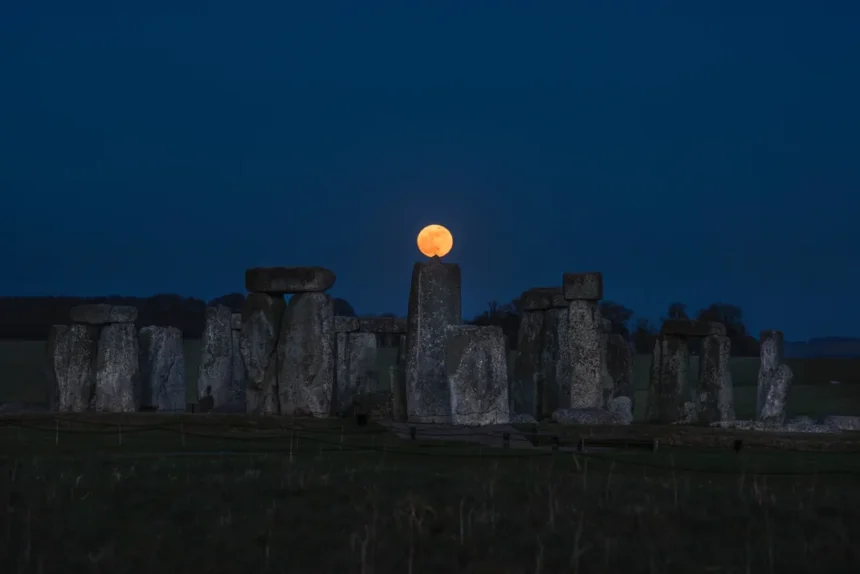Stonehenge, the enigmatic prehistoric monument on Salisbury Plain, has long fascinated researchers and visitors alike. Its alignment with the sun during solstices is well-documented, but a new astronomical phenomenon—the “major lunar standstill”—is shedding light on a lesser-known connection: that between Stonehenge and the Moon.
A major lunar standstill occurs approximately every 18.6 years when the Moon’s rising and setting positions deviate significantly from their usual path along the horizon. During this unique cycle, the Moon reaches higher altitudes in the sky than the summer sun and lower altitudes than the winter sun. It’s a celestial waltz that Stonehenge’s ancient builders may have keenly observed.
Archaeologists believe that Stonehenge’s construction was influenced by lunar cycles. The earliest phase of Stonehenge, around 3000 B.C., saw the creation of a circular ditch with an inner and outer bank. Within this circle, 56 pits—known as Aubrey Holes—were discovered. Some held cremated remains, while others likely once contained upright timbers or stones. Strikingly, many of these cremations clustered in the southeastern part of Stonehenge, near three pits aligned with the southerly moonrise during a major lunar standstill.
Around 2500 B.C., when the iconic large stones were placed at Stonehenge, the builders strategically positioned the four Station Stones. These stones form a rectangle, and their long axis aligns with the most southerly rising point of the moon during the major standstill. Was this deliberate? Did the ancient architects intentionally link Stonehenge’s design to lunar movements? The debate continues, but this rare celestial event provides a fresh opportunity for investigation.
As the Moon dances across the horizon, Stonehenge’s secrets unfold. Whether it was a cosmic observatory, a burial site, or a place of ritual, the ancient monument continues to captivate us.








